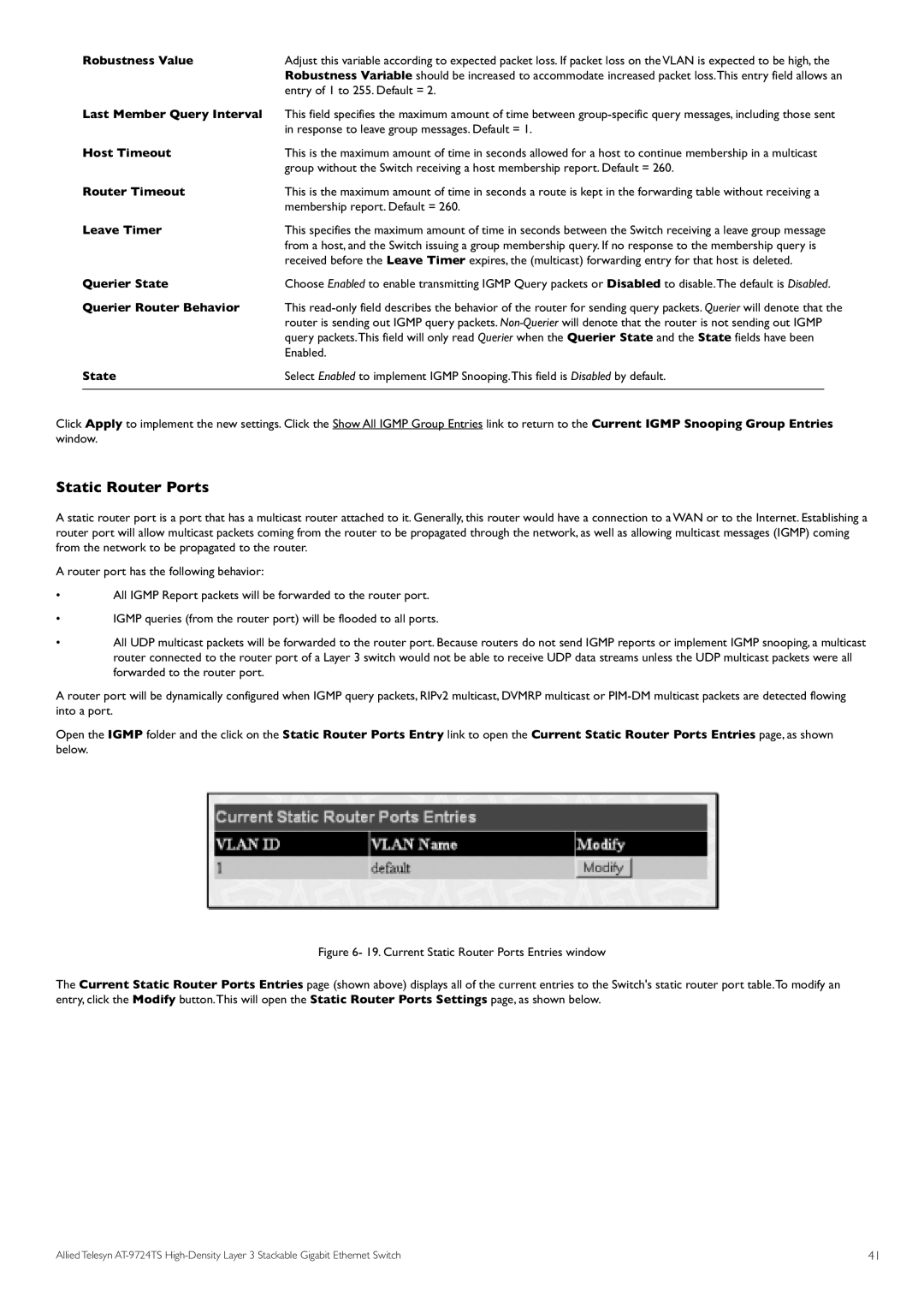
Robustness Value
Last Member Query Interval
Host Timeout
Router Timeout
Leave Timer
Querier State
Querier Router Behavior
State
Adjust this variable according to expected packet loss. If packet loss on the VLAN is expected to be high, the Robustness Variable should be increased to accommodate increased packet loss.This entry field allows an entry of 1 to 255. Default = 2.
This field specifies the maximum amount of time between
This is the maximum amount of time in seconds allowed for a host to continue membership in a multicast group without the Switch receiving a host membership report. Default = 260.
This is the maximum amount of time in seconds a route is kept in the forwarding table without receiving a membership report. Default = 260.
This specifies the maximum amount of time in seconds between the Switch receiving a leave group message from a host, and the Switch issuing a group membership query. If no response to the membership query is received before the Leave Timer expires, the (multicast) forwarding entry for that host is deleted. Choose Enabled to enable transmitting IGMP Query packets or Disabled to disable.The default is Disabled. This
Select Enabled to implement IGMP Snooping.This field is Disabled by default.
Click Apply to implement the new settings. Click the Show All IGMP Group Entries link to return to the Current IGMP Snooping Group Entries window.
Static Router Ports
A static router port is a port that has a multicast router attached to it. Generally, this router would have a connection to a WAN or to the Internet. Establishing a router port will allow multicast packets coming from the router to be propagated through the network, as well as allowing multicast messages (IGMP) coming from the network to be propagated to the router.
A router port has the following behavior:
•All IGMP Report packets will be forwarded to the router port.
•IGMP queries (from the router port) will be flooded to all ports.
•All UDP multicast packets will be forwarded to the router port. Because routers do not send IGMP reports or implement IGMP snooping, a multicast router connected to the router port of a Layer 3 switch would not be able to receive UDP data streams unless the UDP multicast packets were all forwarded to the router port.
A router port will be dynamically configured when IGMP query packets, RIPv2 multicast, DVMRP multicast or
Open the IGMP folder and the click on the Static Router Ports Entry link to open the Current Static Router Ports Entries page, as shown below.
Figure 6- 19. Current Static Router Ports Entries window
The Current Static Router Ports Entries page (shown above) displays all of the current entries to the Switch's static router port table.To modify an entry, click the Modify button.This will open the Static Router Ports Settings page, as shown below.
Allied Telesyn | 41 |
